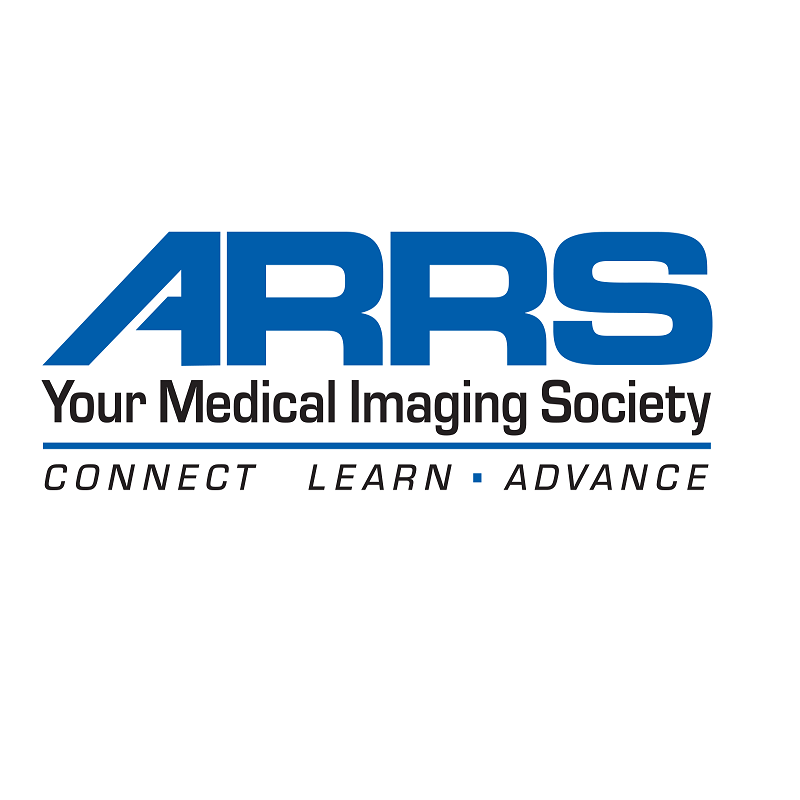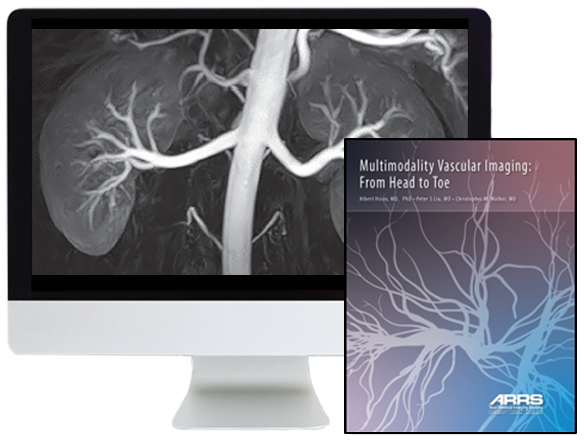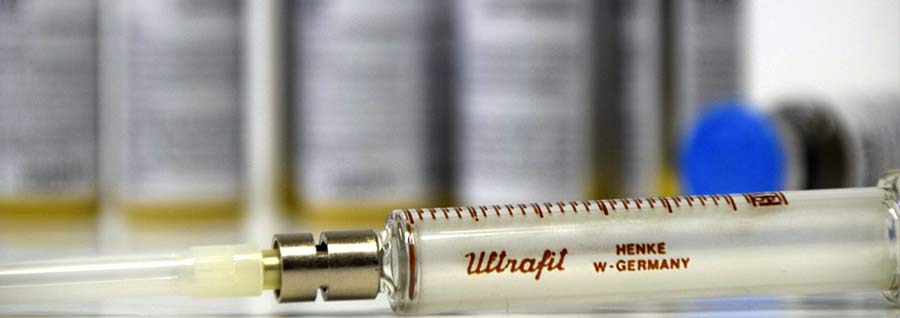Event Organized by:
American Roentgen Ray Society
(866) 940-2777
Learn More about American Roentgen Ray Society
Bringing together many of the foremost teachers in multiple disciplines, our Online Course will provide a holistic view of vascular imaging across subspecialty silos such as neuroradiology, cardiothoracic imaging, abdominal imaging, as well as pediatric and interventional radiology. Enhancing every radiologist's ability to recognize vascular manifestations across various body territories, this course will offer insights to not only improve the diagnosis of these pervasive yet often subtle diseases, but also techniques for optimizing image quality to elevate practices.
Earn credit at your own pace through September 30, 2023 and continue to access your videos until October 1, 2030. See below for detailed information and learning outcomes.

This course package offers 26 CME and SA-CME Credits following completion of an online test.
ARRS Member price: $745
ARRS In-Training Member price: $375
Nonmember price: $1,499
Video content for this Online Course will be available to view until October 1, 2030, which is ten years following the issuance date of this course. ARRS reserves the right to remove video content before the end of the ten year period. Video content that contradicts current science or misleads the viewer based on changes to accepted clinical practice may be removed on a case-by-case basis.
After completing this course, the learner should be able to:
ARRS is accredited by the Accreditation Council for Continuing Medical Education (ACCME) to provide continuing medical education activities for physicians.
The ARRS designates this enduring material for a maximum of 26 AMA PRA Category 1 Credits™ and 26 American Board of Radiology©, MOC Part II, Self-Assessment CME (SA-CME.) Physicians should claim only the credit commensurate with the extent of their participation in the activity.
View the ARRS Return Policy.
Event Organized by:
American Roentgen Ray Society
Date: Oct 01 2030
Venue: Online Course
Address: - Online Course, web
| Date | Course/Event - Venue - Date |
|---|---|
| Oct 01 2030 | Online Course, web - Oct 01 2030 - Multimodality Vascular Imaging From Head to Toe |

The well being and aesthetics industry is growing rapidly which means selecting right training is more important than ever. Botox training courses must keep pace with the standards and regulations in the industry to ensure patient safety. In the anti-aging market the injectable serum, Botulinum Toxin more commonly known as Botox, has become one of the top procedures for the effective treatment of fine lines and wrinkles. Once the preserve of the rich and famous, this wonder-treatment now has a long track record of success and safety making it a highly desirable procedure for a more youthful and healthy appearance.
If you are considering becoming a Botox clinician you will want the best Botox training available today, training that gives you a full understanding of the product and how to administer it safely with outstanding results for your clients every time. Aesthetic Education, promotes Botox Courses that are at the leading edge of training in aesthetics procedures with the best qualification for doctors, nurses and dentists, courses that are superior in meeting the guidelines which all practitioners must adhere to. The depth of learning and hands-on practice will equip you and your teams with the knowledge and experience you need to be fully regulated and confident to deliver safe and outstanding services at your practice.

North America
Boston, MA - New York, NY - Los Angeles, CA - Atlanta, GA - Las Vegas, NV - Dallas, TX - Detroit, MI - Chicago, IL - Houston, TX - Orlando, FL - Philadelphia, PA - Naples, FL - Tampa, FL - Charleston, SC - Jacksonville, FL - Canada - Fort Lauderdale, FL - Omaha, NE - Baltimore, MD - Washington, DC - New Orleans, LA - Miami, FL - Indianapolis, IN - Seattle, WA - Charleston, SC - Jackson, MS - San Francisco, CA - Fort Myers, FL - Des Moines, IA - Denver, CO - San Antonio, TX - Kansas City, MO - Portland, OR - Atlanta, GA - Austin, TX - Columbus, OH - Minneapolis, MN - Albuquerque, NM - Louisville, KY - Buffalo, NY - Raleigh, NC - Pittsburgh, PA - Little Rock, AR - Seattle, WA - St. Louis, MO - New York, NY - Los Angeles, CA -Central America
Mexico - Honduras - Nicaragua - El Salvador - Panama - Belize - Costa Rica - GuatemalaCaribbean
Haiti - Puerto Rico - Islas Virgenes - Republica Dominicana - Jamaica - Cuba - Bahamas - Trinidad y Tobago - Barbados - CanadaEurope
Dubai - Paris SpainBotox Training and Dermal Fillers for Argentina, Bolivia, Brasil, Chile, Colombia, Costa Rica, Cuba, Dominica, Republica Dominicana, Ecuador, El Salvador, Guatemala, Haiti, Honduras, Mexico, Nicaragua, Panama, Paraguay, Peru, Puerto Rico, Uruguay, Venezuela.
MD.Education | The Next Step in Medical Learning
MD Courses
Pain Management Courses
Medical Courses
Copyright 2025 MD.Education - All rights reserved. - Botox® is a registered trademark of Allergan, Inc.